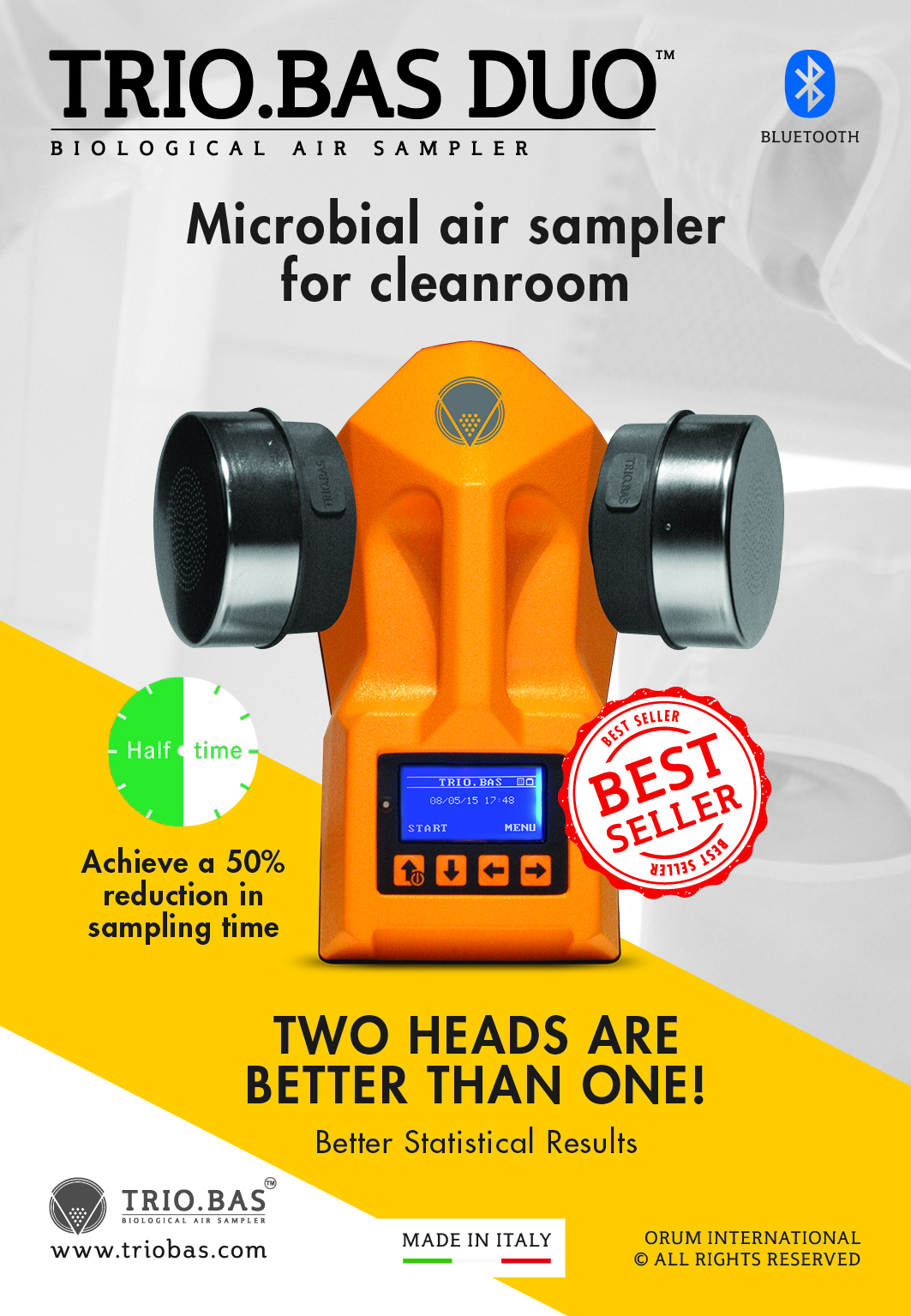Choosing a Microbiology Laboratory Autoclave/Sterilizer
- Autoclaves or sterilizers are vessels that use pressurized steam to eradicate micro-organisms.
- Their purpose in the microbiology laboratory is either to prepare culture media, reagents and equipment or for decontaminating biohazardous waste materials.
Whilst sterilization can be achieved using a number of techniques: irradiation [UV and other]; filtration; chemical etc. In the microbiology laboratory, the most widely used sterilizers are autoclaves – these eradicate micro-organisms by use of pressurized steam to cause thermal stress. To achieve a sufficient kill rate it is necessary to raise the temperature such that even the most thermo-tolerant are inactivated, hence the classic 121°C for 15 minutes.
With the increased requirement to meet various laboratory safety and quality standards, modern autoclaves have evolved considerably from the days when large ‘pressure cookers’ were widely used, this has resulted in a whole range of autoclave alternatives, choosing one will depend on your finance as well as the primary purpose for which the autoclave will be used.
There is a need to verifiably demonstrate that not only have organisms been eradicated but also, in particular with culture media, that the growth chracteristics of the media have not been compromised by the sterilization cycle. It can be virtually guaranteed that some components will be thermolabile and suffer from a degree of heat degradation during the autoclaving/sterilization process, possibly leading to reduced performance. Consequently there are 2 main considerations when sterilizing culture media:
- Is the thermal cycle sufficient to eradicate micro-organisms?;
– Is the culture medium still usable?
These 2 functions can frequently conflict. However commercially available culture media usually come with recommended sterilization procedures, which if followed will allow optimal sterilization and ensure that the culture media performance is not compromised. Accelerated cooling systems means the time at high temperatures is kept to a minimum and for added convenience some autoclaves will have a warming function for plating media that can maintain agar at 40°C ready for pouring when required.
Waste disposal is less demanding in that a definitive ‘overkill’ policy can be used i.e. temperature/time/pressure such that no organisms can survive the thermal cycle. But there must be adequate steam penetration of the load which can be difficult to achieve when there are large volumes of air such as with petri dishes or porous loads.
Purchase considerations?
It is important to think about what you are going to put into the autoclave to make sure that the one you buy has the right specification to process it effectively and efficiently, especially if you are going to have to prove this to a certifying body later on.
The most critical element is the loading. Placing too much material in an autoclave does not allow sufficent room for thorough steam circulation – how can you be certain that all the load has been adequately sterilized? Make sure your system purchase will cope with the volume and type of material you need to put through.
A pre-cycle vacuum removes air from the load, free-steaming provides better temperature distribution and pulsed free-steaming improves steam penetration. For porous loads, vacuum drying can be used.Vacuum cooling makes the whole cycle time faster so more loads can be processed in the working day.
Autoclaves can range in size from small benchtop models which have a small footprint and therefore take up little laboratory space through to large – almost industrial scale systems – that would most usually be located in their own dedicated facility.
The classic design of an autoclave uses a circular cross section. This enables high pressures to be achieved with the minimum of stress bearing materials – however the disadvantage is that more care must be taken in how the autoclave is loaded particularly with front loading systems. The tallest containers must always be placed in the centre of the shelf.
Some manufacturers have overcome this by using square or rectangular pressure vessels. Autoclaves of this type of design can accommodate a variety of loads more easily but require a considerably more robust construction to withstand the internal pressure.
With the increasing need for demonstrable validation of laboratory processes, autoclaves are now available which can semi or fully automate the complete sterilization cycle and at the same time fully log the characteristics of each cycle. Microprocessor control systems can be difficult to use so it is important to consider who is likely to be using the equipment and how often the settings may need to be changed. Some systems are easy, whereas others require a manual and passwords to make even a small adjustment to the set time or temperature.
Not every laboratory around the world is able to take advantage of the latest autoclave technology so there remains room for entry level autoclaves – these are certainly the least expensive but require considerably more labour input.How much space do you have?
Lack of floor space would indicate that a benchtop autoclave is more appropriate – however these will not be able to take as large a load as a free standing autoclave.
Then of course there is a choice of front loading or a top loading autoclave? The latter will not take up as much space but it might be a problem lifting in or out large flasks of hot media. Conversely a front loading autoclave will need a little more space – the door has to open outwards.
Talking of doors there are autoclaves with push button door closures – forget the days of winding up and down butterfly nuts.
In some instances there is a requirement for pass-through autoclaves – these enable loads to be entered from one side of the autoclave and taken out from the other side – useful for those environments in which different levels of containment are required, such as clean rooms or category 3.
For media preparation there are systems which allow multi-cycle run modes – useful for media such as chocolate agar?
Will you ever need to fully automate the media preparation/plate pouring process? – if that’s likely then it might be appropriate to buy an autoclave that can integrate at a later date with a plate pourer/bottle filler system.
Autoclaves should be easy to clean both from the inside and outside, some ranges have coatings which could almost be called ‘self-cleaning’ – these incorporate materials which have biocidal activity.
Calibration and Performance Qualification Testing of Autoclaves
To succesfully validate an autoclave there must be certainty that it is functioning as the manufacturer intended. This can only be achieved by ensuring that it is calibrated and serviced correctly.
Calibration is the process of determining the actual* temperature inside an autoclave when a given temperature is set. Without a calibration – even with its uncertainties, the actual temperature inside the autoclave is unknown. The electronics may be wrong, the temperature probe may be damaged, the pressure gauge – a very useful backup – may also be wrong etc.
Performance qualification is one of several generic terms for testing an autoclave – and its load – to ensure the load is properly processed. Usually a calibrated, multi channel, data logger is employed so that considerable numbers of points in the load, together with salient points on the autoclave, can be logged. Analysis of these results can point to many problems in the setup of the autoclave or in the way the load is contained. Significant differences can be seen, for instance, between glass and plastic bottles or plastic and metal discard containers, or between single and double bagged discard loads. Performance qualification is the only way to know what is actually happening to the load. It is vital that the test load is typical of loads actually processed as the results cannot necessarily be read across. However, once the performance qualification is done, calibration alone thereafter is often sufficient – at least if the load does not change.
Aside from data logging of times and temperatures, there are a number of techniques using biological and chemical indicators, for ensuring that the actual load is being adequately sterilized: such as coloured tape, strips, spore strips and spore suspensions .
Whatever technique is used it must be appropriate to typical loading of the autoclave both in regard to the load quantity and load contents.
* Where ‘actual’ means ‘best estimate’
Supplier Information
| Benchtop and vertical | Advantage Lab | Visit Website | More Info |
| Range | Astell | Visit Website | More Info |
| Range | Fedegari | Visit Website | More Info |
| Hiclave Series | Hirayama | Visit Website | More Info |
| HG Series | HMC Europe GmbH | Visit Website | More Info |
| Touchclave-R | LTE | Visit Website | More Info |
| Benchtop and vertical | Nuve | Visit Website | More Info |
| Range | Priorclave | Visit Website | More Info |
| Range | Rodwell | Visit Website | More Info |
| Range | Steris | Visit Website | More Info |
| Range | Systec | Visit Website | More Info |
| Range | Tuttnauer | Visit Website | More Info |
| 3M™ Comply™ | 3M Microbiology | Visit Website | More Info |
| BAG-BioStrip, EZ Test Dampf | ALMEDICA AG | Visit Website | More Info |
| Spore Strips | CoaChrom Diagnostica | Visit Website | More Info |
| Ampoules, strips, suspensions | Liofilchem s.r.l. | Visit Website | More Info |
| Spore strips, ampoules | Mesa Laboratories, Inc. | Visit Website | More Info |
| Spore Strips | NAMSA | Visit Website | More Info |
| Spore Strips | Statens Serum Institut | Visit Website | More Info |
| 3M™ Attest™ | 3M | Visit Website | More Info |
| BAG-ChemoStrip | BAG | Visit Website | More Info |
| Autoclave Tape | CoaChrom Diagnostica | Visit Website | More Info |
| Labels | NAMSA | Visit Website | More Info |
| B+D test type and strips | VP stericlin | Visit Website | More Info |
| More Info |
This guide has been prepared by Food Safety Info, scientific and technical information providers for the food industry. For more information, visit our web site at www.foodsafetywatch.com
















